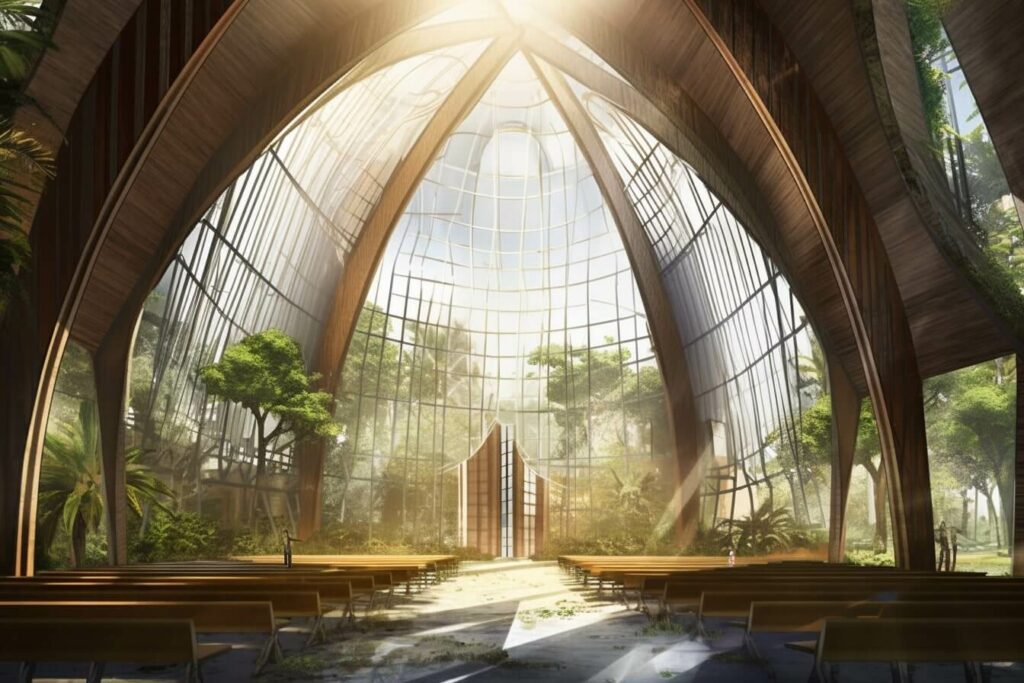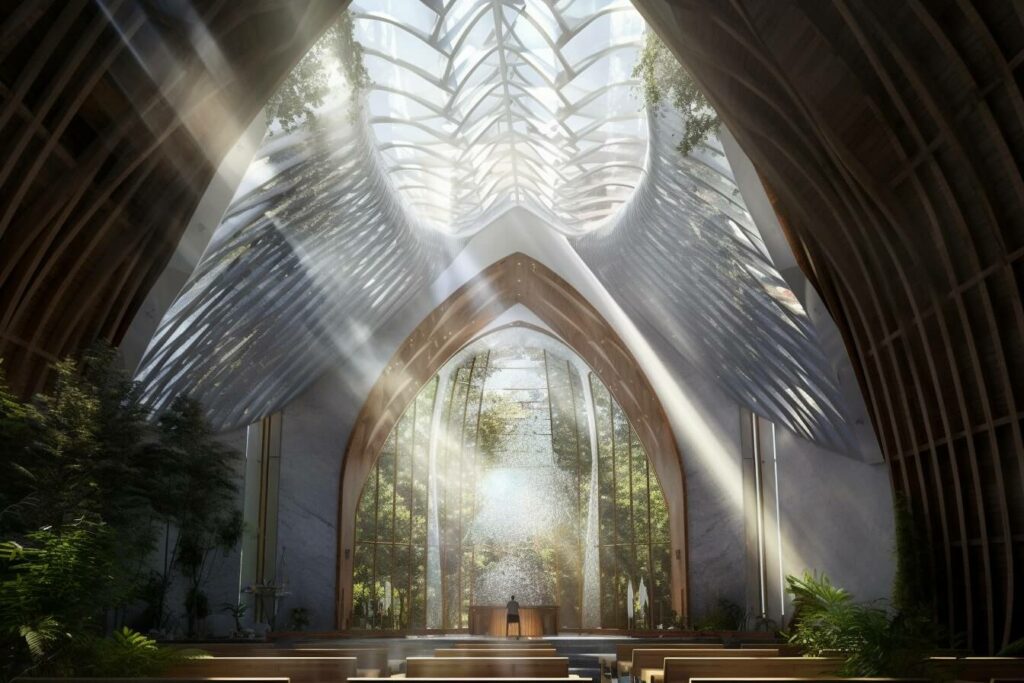Unlock Premium, Members-Only Content
Your source for the most relevant updates in sustainable construction
The demand for sustainable design solutions has never been higher as the world continues to face the challenges of climate change, resource depletion, and urbanization.
Biomimicry, the innovative approach of mimicking nature’s strategies to address complex human problems, offers many opportunities for architects, interior designers, and construction companies to stay ahead of the market.
This comprehensive guide delves into the fascinating world of biomimicry for sustainable design, answering the most frequently asked questions and providing practical insights for industry professionals.
What is biomimicry, and how can it be applied to sustainable design?
Biomimicry is an interdisciplinary field that involves studying and emulating nature’s efficient designs, processes, and ecosystems to create sustainable solutions for human challenges. By harnessing the wisdom of 3.8 billion years of evolution, architects, interior designers, and construction companies can draw inspiration from the natural world to develop groundbreaking innovations in sustainable design.

Why should professionals in the building industry adopt biomimicry for sustainable design?
- Enhanced sustainability: Biomimicry encourages the use of eco-friendly materials, energy-efficient systems, and circular design principles, significantly reducing the environmental impact of buildings.
- Improved performance: Nature’s time-tested strategies have been optimized through millions of years of evolution, resulting in highly efficient designs that enhance a building’s performance.
- Unique aesthetics: Biomimicry-based designs offer a distinctive and visually appealing approach, making a project stand out.
- Future-proofing: As regulations and consumer preferences shift towards sustainability, adopting biomimicry will keep professionals ahead.
- Competitive advantage: Implementing biomimicry in design projects can give firms a competitive edge as clients seek sustainable solutions.
How can biomimicry be incorporated into various stages of the design process?
- Conceptualization: Study nature’s strategies for inspiration and identify relevant principles that can be applied to your project.
- Material selection: Choose materials that are sustainable, recyclable, and inspired by natural processes, such as biodegradable polymers or bio-based composites.
- Design development: Integrate biomimicry principles into the building’s form, structure, and systems to optimize performance and minimize environmental impact.
- Construction techniques: Implement innovative construction methods inspired by nature, such as 3D printing or modular assembly, to reduce waste and improve efficiency.
- Post-occupancy evaluation: Monitor the performance of your biomimicry-inspired design and refine future projects based on lessons learned from nature.
What are some examples of biomimicry applied to sustainable design?
- Eastgate Centre, Harare, Zimbabwe: Inspired by termite mounds, the Eastgate Centre utilizes passive cooling and natural ventilation to maintain a comfortable indoor temperature, significantly reducing energy consumption.
- Velcro: Swiss engineer George de Mestral developed Velcro after observing how burdock seeds adhered to his clothing. The hook-and-loop fastening system is now used in various applications, including sustainable building materials.
- The Eden Project, Cornwall, UK: Mimicking the hexagonal structures found in honeycombs and radiolarians, the Eden Project’s geodesic domes provide an energy-efficient and visually striking space for showcasing the world’s largest collection of plants.
- The Lotus Building, Wujin, China: Drawing inspiration from the lotus flower, this innovative building incorporates a highly efficient energy management system and optimizes natural light, demonstrating the power of biomimicry in creating visually stunning and sustainable architecture.
Unlock Premium, Members-Only Content
Your source for the most relevant updates in sustainable construction
Main Strategies for Beautiful and Sustainable Projects
Architects, interior designers, and construction companies can apply various biomimicry strategies to create visually stunning and sustainable projects. These strategies, inspired by nature, can enhance aesthetics, improve building performance, and contribute to a more sustainable built environment.
Here, we explore some of the main biomimicry strategies that professionals can adopt to create beautiful and sustainable projects:
Biomimicry Feature #1: Form and Structure
Nature provides countless examples of efficient and visually appealing forms and structures. Professionals can study and mimic these patterns to optimize their designs’ structural stability, energy efficiency, and aesthetics.
Examples include the hexagonal honeycomb pattern for lightweight yet strong structures, the aerodynamic shapes of bird wings and fish bodies for improved airflow, and the Fibonacci sequence found in various natural patterns, such as pinecones and sunflowers, to create visually harmonious designs.
Biomimicry Feature #2: Material Selection and Use
Nature offers a wealth of sustainable materials and processes that can be harnessed for green building projects. Designers can minimize their projects’ environmental impact by choosing renewable, biodegradable, or recyclable materials.
Examples include using bio-based composites, such as bamboo or hemp, for structural components and insulation or incorporating mycelium-based materials as a sustainable alternative to traditional building materials like concrete and plastic.
Biomimicry Feature #3: Energy and Resource Efficiency
Biomimicry can inspire innovative strategies for optimizing energy and resource efficiency in building projects. Designers can develop sustainable heating, cooling, lighting, and water management systems by observing how plants, animals, and ecosystems efficiently manage energy and resources.
Examples include the passive solar design inspired by sunflowers’ heliotropic movements or the efficient water collection systems inspired by the Namib Desert beetle’s water-harvesting techniques.
Biomimicry Feature #4: Biophilic Design
Biophilic design aims to create a strong connection between nature and the built environment by incorporating natural elements, materials, and patterns. Research shows biophilic design can improve occupant well-being, productivity, and overall satisfaction.
Biophilic design strategies include using natural materials like wood and stone, incorporating living walls and green roofs, or integrating water features and natural light.
Biomimicry Feature #5: Resilience and Adaptability
Nature’s ability to adapt and respond to changing conditions offers valuable insights for designing resilient and adaptable buildings. By studying nature’s strategies, professionals can create structures that can withstand and adapt to various environmental stressors, such as extreme weather events, earthquakes, or rising sea levels.
Examples include flexible structural systems inspired by bamboo forests’ swaying or dynamic facade systems that adapt to changing light and temperature conditions, similar to how pinecones open and close in response to humidity.
By incorporating these main biomimicry strategies into their projects, architects, interior designers, and construction companies can create beautiful, sustainable designs that harmoniously blend with the natural world.
Integrating these strategies can lead to improved building performance, enhanced occupant well-being, and a reduced environmental footprint, contributing to a brighter and greener future for all.

Conclusion: The Future of Sustainable Design Lies in Nature
Embracing biomimicry for sustainable design holds immense potential for architects, interior designers, and construction companies seeking to create a better, greener future. This approach leads to more environmentally friendly and energy-efficient solutions and offers unparalleled aesthetic possibilities that can set professionals apart in a competitive market.
As the demand for sustainable design grows, industry professionals must stay informed about the latest innovations and techniques. UGREEN Sustainability Consultancy Services provides expert guidance and support, helping clients achieve their sustainable design goals by incorporating biomimicry principles into their projects.
Through UGREEN Skills, our educational platform, professionals and companies can access a wealth of resources and courses to enhance their knowledge and expertise in sustainability and biomimicry.
By learning from nature’s time-tested strategies and harnessing the power of biomimicry, architects, interior designers, and construction companies can lead the charge in creating a more sustainable built environment.
Don’t miss the opportunity to be at the forefront of this exciting movement – discover UGREEN Sustainability Consultancy Services or UGREEN Skills today and take the first step towards a greener future.
Unlock Premium, Members-Only Content
Your source for the most relevant updates in sustainable construction
If you need our services in the Portuguese language, click here.